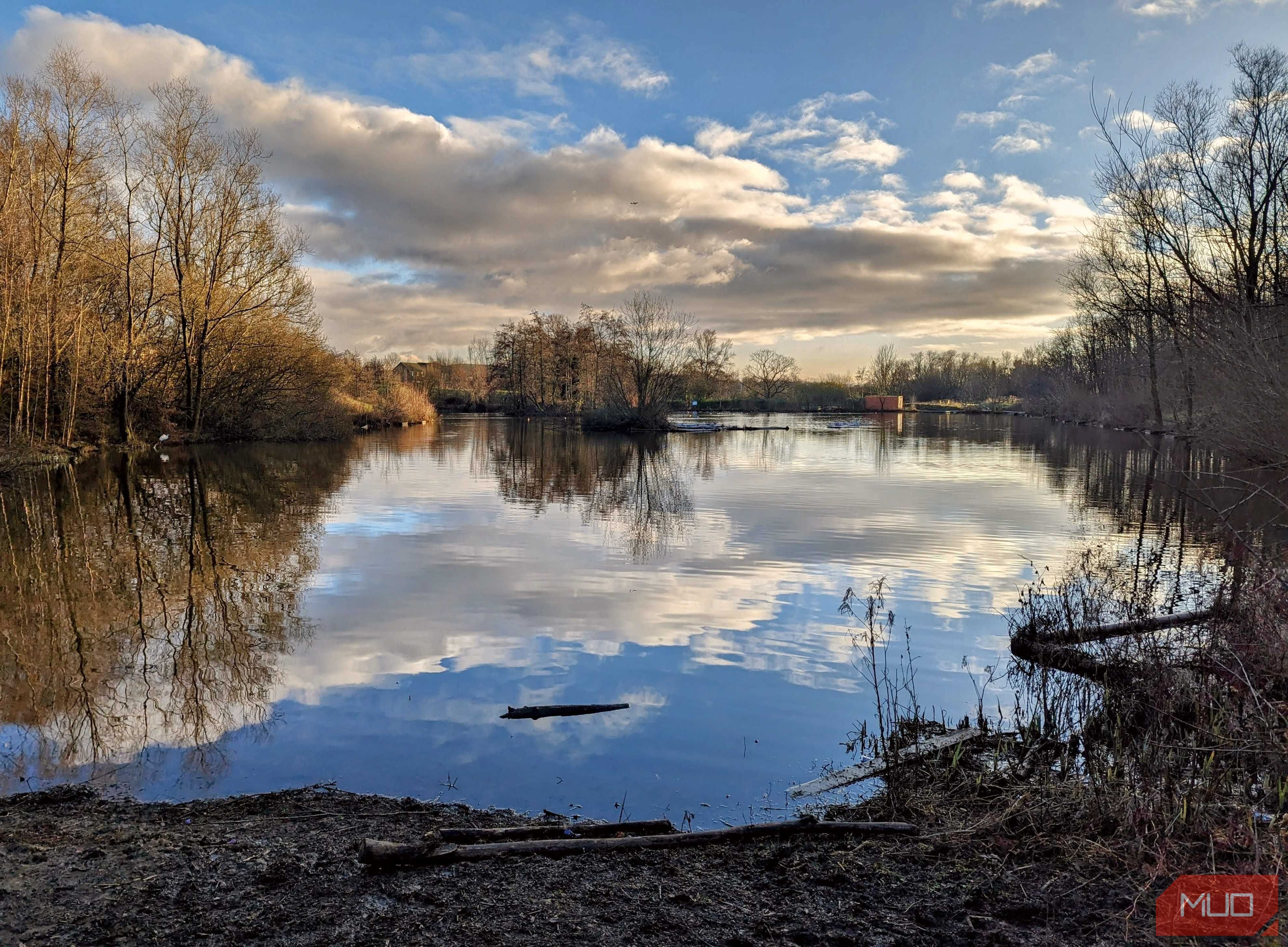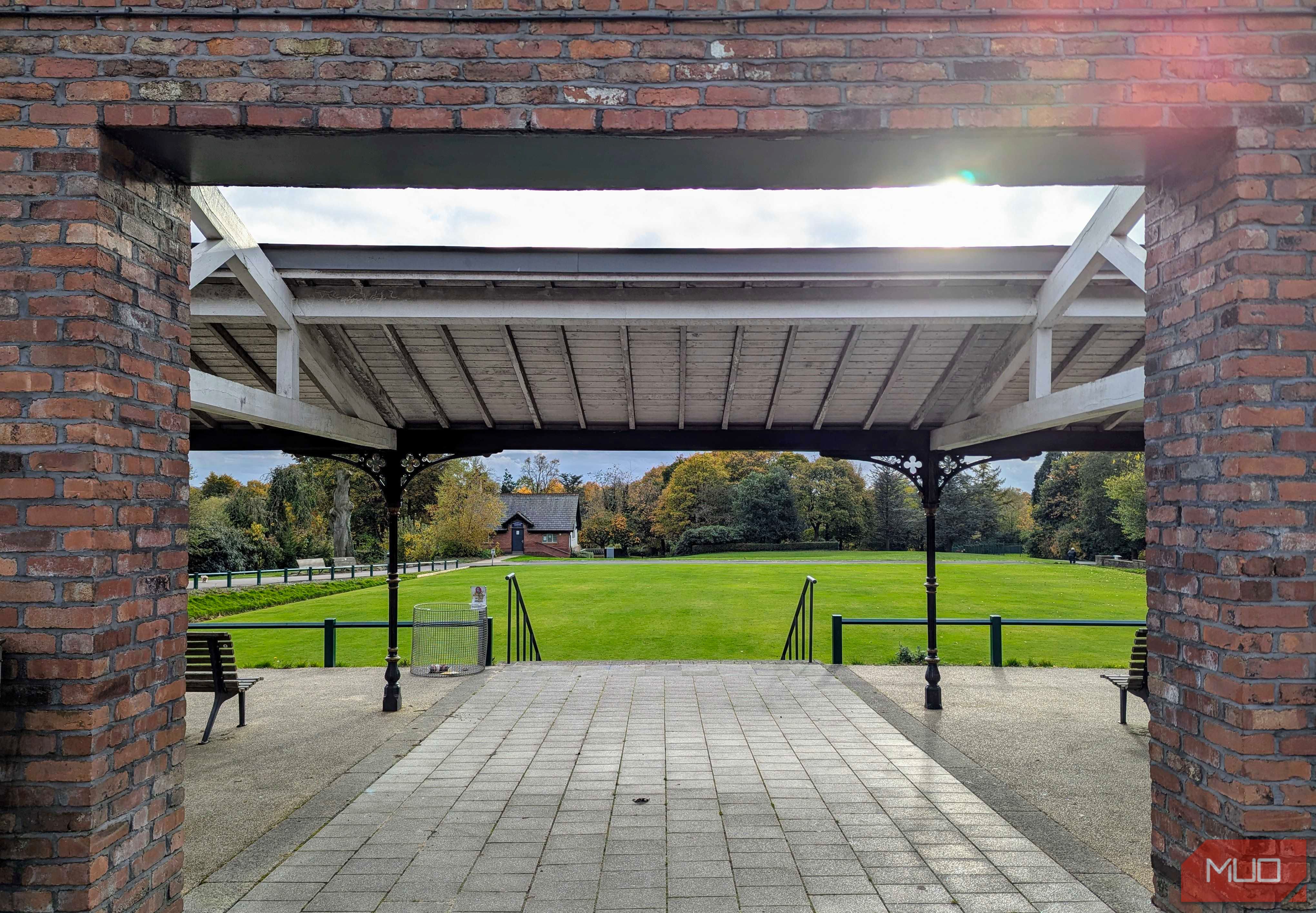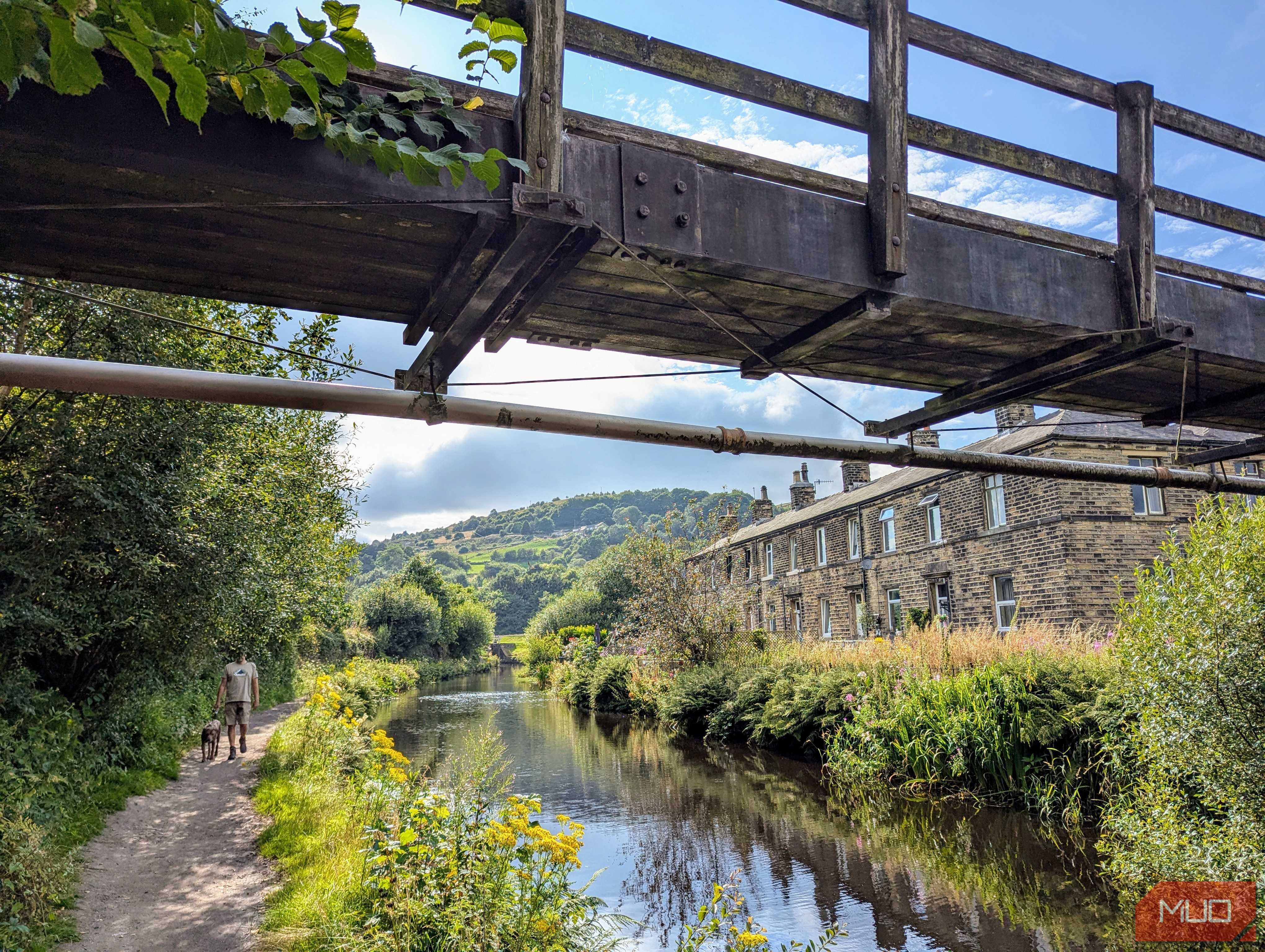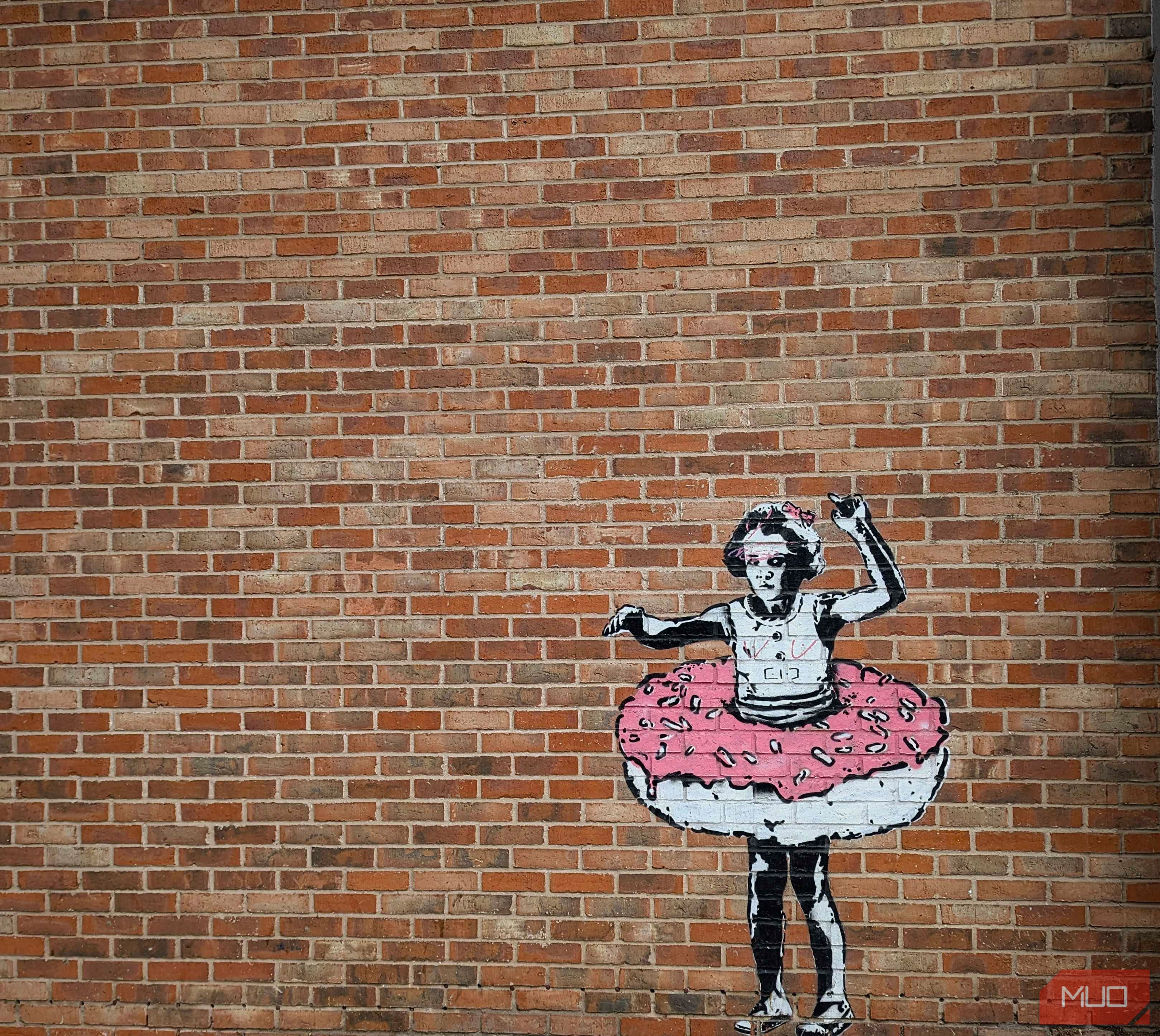If you use your smartphone camera regularly (and who doesn’t at this point?), I recommend enabling the grid lines. They give you a leg-up when shooting, allowing you to take your smartphone photography to the next level.
However, if you need some convincing, here are some examples of the types of shots that grid lines will help you achieve. While these shots are all possible without grid lines, grid lines make shooting much easier, and will help you get better results.
1 Use Grid Lines to Find the Symmetry of a Shot
Some photography styles benefit heavily from the use of symmetry. Landscapes that feature a horizon, for example. Or urban photography, where angular elements such as buildings and roads are everywhere you look. And you can use the grid lines on your phone to find the symmetry of a shot. Just be sure to avoid making these common urban photography mistakes.
If you have the option of enabling a 4×4 grid, do so. This way, you’ll have a grid line splitting the image in two, making it easier to see symmetry where it exists. However, even the standard 3×3 grid can help. For example, when shooting in an urban area, buildings straddling the 3×3 lines on both sides will create satisfying symmetry.
2 Use Grid Lines to Capture More Satisfying Reflections
Reflections can elevate an ordinary photo to one that draws the viewer into the scene in a big way. Whether that’s from splitting a photo in two, with a reflection in water matching what’s above, or from capturing a reflection in a window or shiny surface. And by using the grid lines, you can make this effect even more impressive.
Again, the 4×4 grid is the best option for this, as you can use the center line to find the perfect reflection. However, even the 3×3 grid helps, as it can enable you to figure out where to position your camera (or how far to zoom in or out) before pressing the shutter button. For example, a reflection of everything in two-thirds of the frame in the other third will still add interest.
3 Use Grid Lines to Achieve Longer Leading Lines
Leading lines are one of my favorite composition techniques, as, when done well, they can achieve multiple things. The most obvious being that they draw viewers’ eyes into the photo, pointing them in the direction of the subject. But they can also be an interesting element in their own right, and the longer the leading lines are, the more they become the main focus.
Grid lines can help you achieve longer, and more aesthetically pleasing, leading lines. If you see an opportunity to include leading lines in a photo, see if there’s an opportunity to extend them. This could just mean walking backwards to capture more in the frame. Or you can get closer to the ground to artificially extend them. Either way, grid lines will help you keep everything aligned.
4 Use Grid Lines to Line Up Natural Frames
When shooting with my smartphone, I’m always on the lookout for natural frames. Whether they’re the branches of a tree, a gap in a fence, or a literal window frame, you can use these elements to make your photo infinitely more interesting. They add something of value in the foreground, while literally helping you frame the subject behind it.
The grid lines on your phone will enable you to find the best way to use these natural frames to frame the subject behind them. You don’t necessarily want the subject to be in the dead center of your shot. You may also want to pull back so that the edges of the frame don’t match the edges of the photo. And grid lines can help you achieve the best results.
5 Use Grid Lines to Add More Depth to Any Photo
When shooting, regardless of what hardware you’re using, you should always be considering the entirety of what you’re capturing. Sure, the subject is the key element, but what’s happening around it is also important. And an oft-ignored use of grid lines is their ability to add more depth to any photo, regardless of the subject.
Look around you and see what else you could include in the shot. Would it add something to the final composition? If so, seek to include it by changing position or angle, or zooming out. However, doing any of the above will change the layout of the shot, which is where the grid lines can help you keep everything aligned as you originally intended.
6 Use Grid Lines to Emphasize the Negative Space
While many photographers seem to overlook the importance of negative space, it’s crucial to include some in every shot. The negative, unfilled space, can put the actual subject more in focus. A busy photo, where every single pixel is occupied, leaves no breathing room for your eyes, and this can lead the viewer to not know what they’re meant to be looking at.
Grid lines come in handy here, as they enable you to position the subject of your shot in the photo, surrounded by negative space. Whether that negative space is a cloudy sky, a brick wall, or a sandy beach. Grid lines will enable you to find the sweet spot where the subject is in focus, while everything around them is essentially framing their presence.
7 Use Grid Lines to Create More Dynamic Tension
Grid lines are generally used to ensure symmetry or balance, but they can also be used to frame subjects in interesting ways. By putting the subject near the edge of the frame, you can create dynamic tension. As an example, when photographing someone running, having them occupy the left side of the frame while they’re moving to the right, leaves more room to show where they’re running.
You’re essentially creating movement and action, even though the shot is stationary. Grid lines help with this by showing you where to position everything in the frame for the maximum amount of dynamic tension. And if your phone’s camera app offers them, the Golden Ratio grid lines provide a good guide for balancing out the various elements.
By utilizing the grid lines on your smartphone’s camera app, you can achieve better photos almost every time. As you can see above, grid lines don’t just help keep everything aligned, their presence makes you think more about composition, and shoot more interesting photos as a result.










